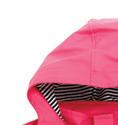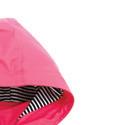




























This Learner’s Book provides activities to support the second term of Let’s Explore for Cambridge Early Years 2.
Activities can be used at school or at home. Children will need support from an adult. Additional guidance about activities can be found in the For practitioners boxes.
Some activities use stickers. The stickers can be found in the section in the middle of this book.
Stories are provided for children to enjoy looking at and listening to. Children are not expected to be able to read the stories themselves.
Children will encounter the following characters within this book. You could ask children to point to the characters when they see them on the pages, and say their names.
The Learner’s Book activities support the Teaching Resource activities. The Teaching Resource provides step-by-step coverage of the Cambridge Early Years curriculum and guidance on how the Learner’s Book activities develop the curriculum learning statements.

Hi, my name is Rafi.
Hi, my name is Kiho.
Hi, my name is Mia.
Find us on the front covers doing lots of fun activities.

Hi, my name is Gemi.


Create.





Draw and pass it on to your partner.
Children work in pairs. Explain that they need to decide what picture to draw and who will draw what. The puzzle will be most effective if children collaboratively draw a simple object such as a ower or a teddy bear. Children should take it in turns to each draw in the squares to make up the whole picture of their chosen object. Children can then colour in their picture together. If children are nding it dif cult to share the puzzle, help them to work together. You could help them to decide what the picture on the puzzle should be.













































Children identify the instruments. Talk about the sound that each instrument makes, asking children to describe the sound. Remind them of the words strong/soft and high/low to help them. Ask Can you make a loud/soft sound? Then they can colour in the instruments.

































































Children discuss and circle the photos of clothes on the left that will keep them dry on a rainy day. Ask them to describe the materials these items are made from, and why those materials are good for a rainy day. Then children draw rain clothes of their choice on the person. These don’t need to be perfect or look exact. Children talk about their choices, describing what items they have drawn and why.




















Children describe their favourite fish. Model this by saying My favourite fish is blue and white/spiky/spotty. Can you find it? In pairs, children then take it in turns to describe a fish on the page. Their partner has to guess which fish they are describing and circle it. They take it in turns until all fish have been described and circled correctly. Make sure children are using different colour pens.